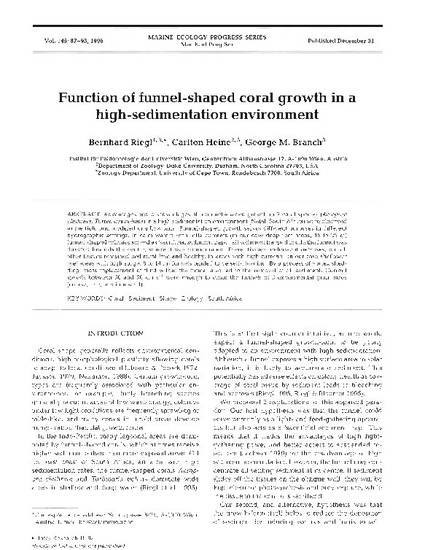
- Coral,
- Sediment,
- Shape,
- Ecology,
- South Africa
Advantages and disadvantages of a funnel-shaped growth in 2 coral species (Acropora clathrata, Turbinaria peltata) in a high-sedimentation environment (Natal, South Africa) were observed in the field and modeled in a flow tank. Funnel-shaped growth serves different purposes in different hydrographic settings. In calm waters with little currents (in our case deep reef areas, 18 to 25 m) funnel-shaped colonies served as 'sacrificial sediment traps': all sediment trapped inside the funnel was directed towards the centre, where it was concentrated. There, tissues underwent necroses, but all other tissues remained sediment free and healthy. In areas with high currents (in our case shallower reef areas with high surge, 8 to 14 m) funnels tended to be self-cleaning. By a process of vortex shedding, mass replacement of fluid within the funnel also led to the removal of all sediment. Current speeds between 30 and 90 cm s-1 were enough to clean the funnels of 3 experimental grain sizes (coarse, fine, medium sand).
Available at: http://works.bepress.com/bernhard-riegl/84/

©Inter-Research 1996